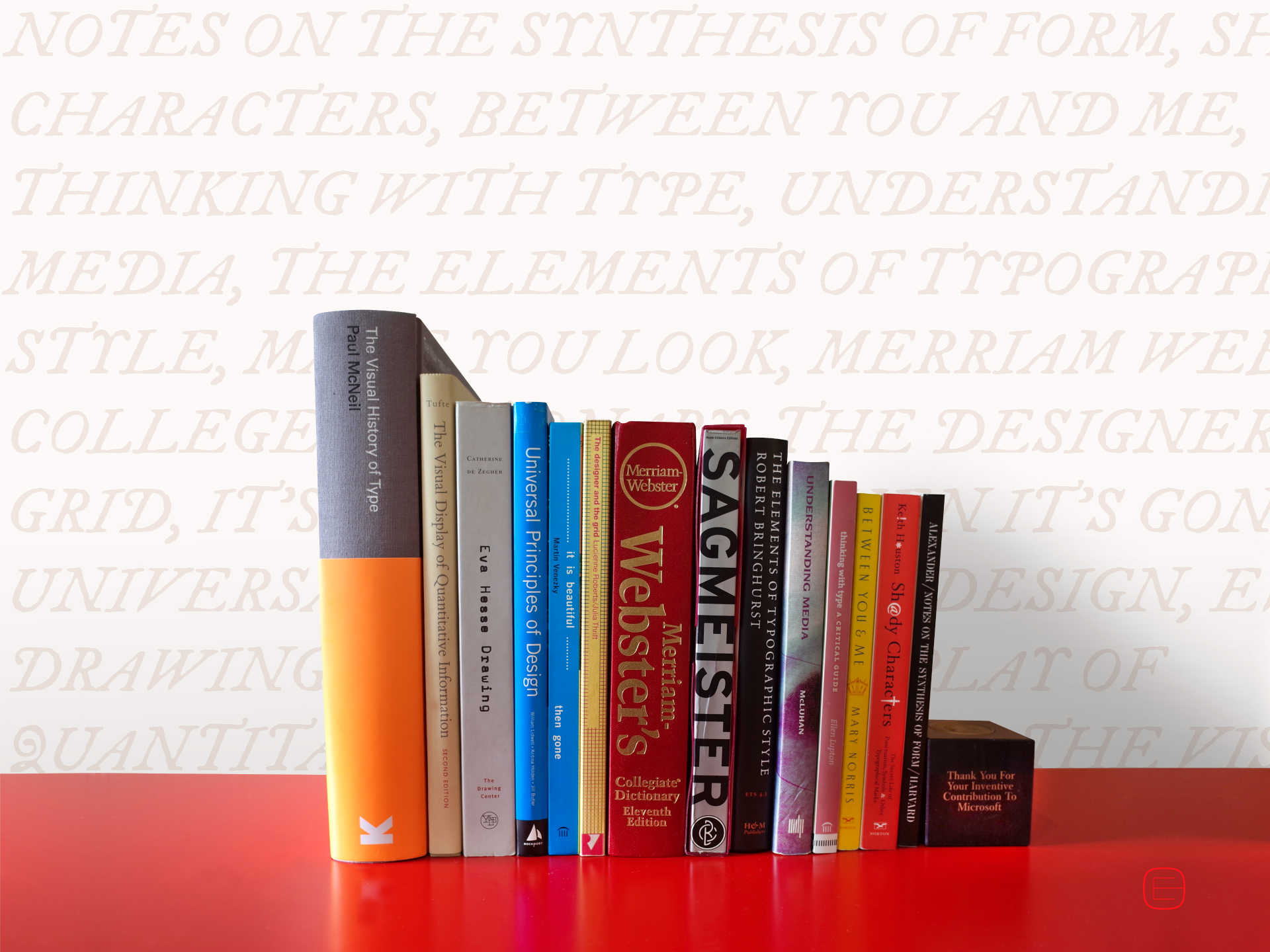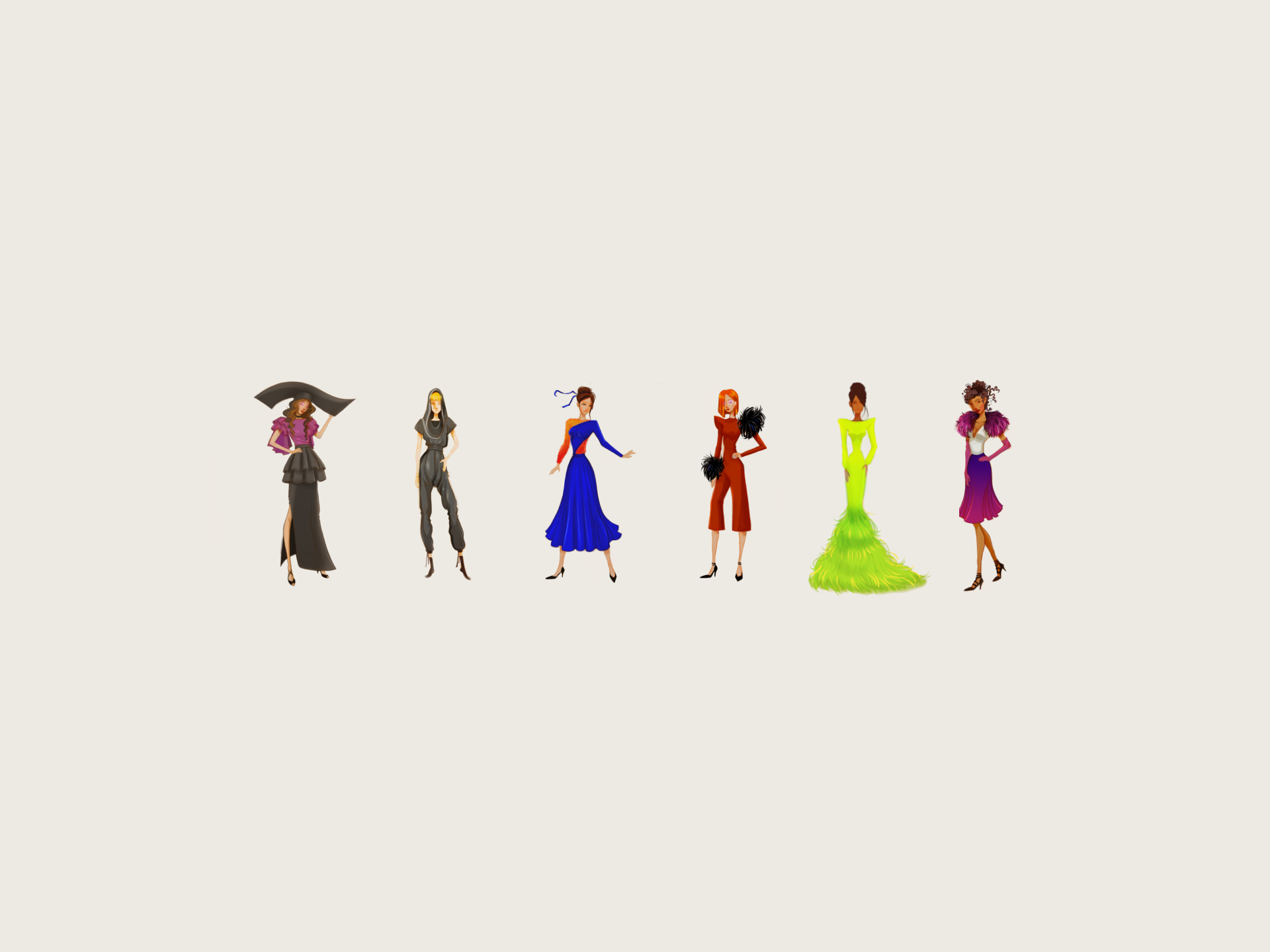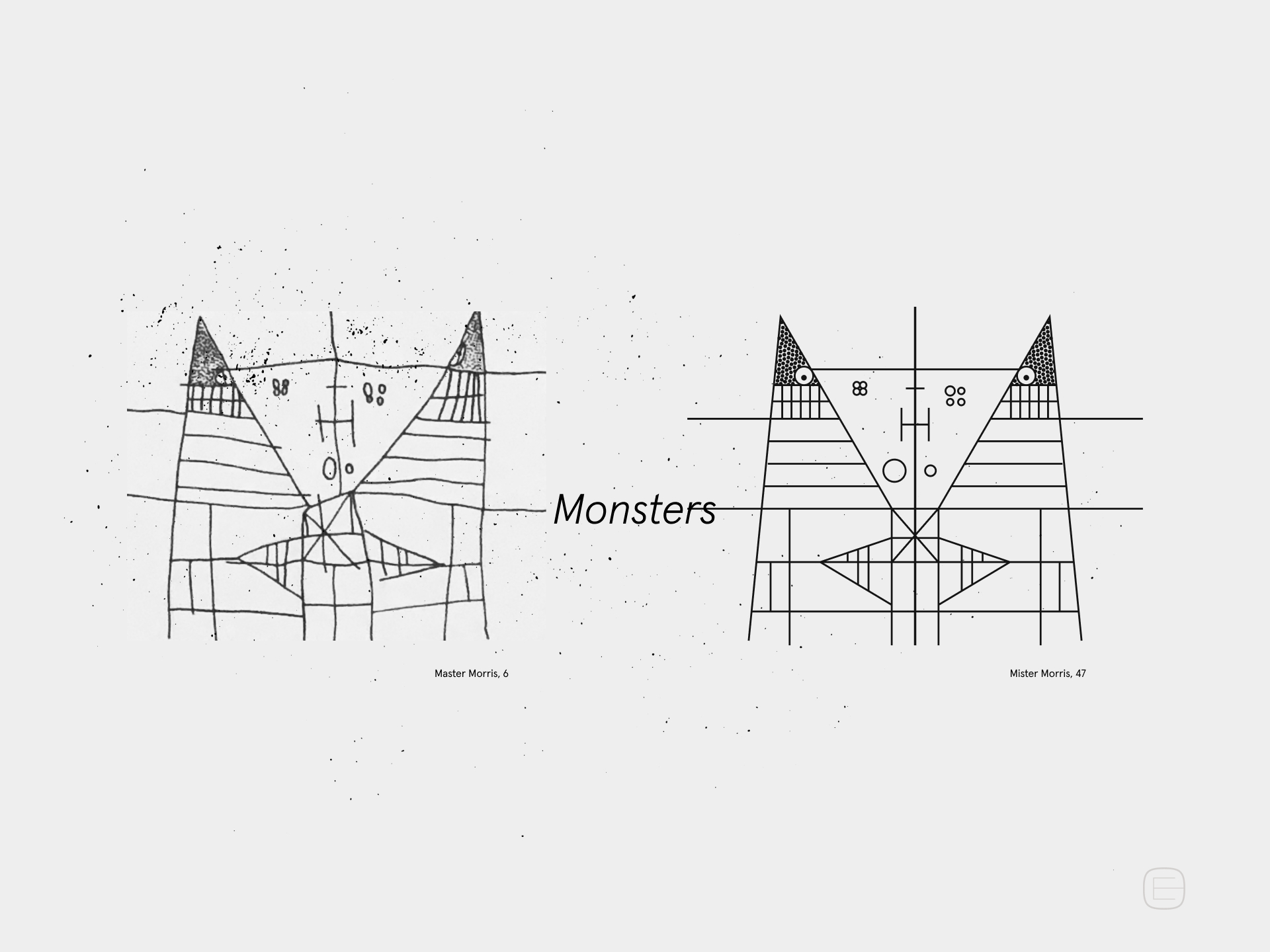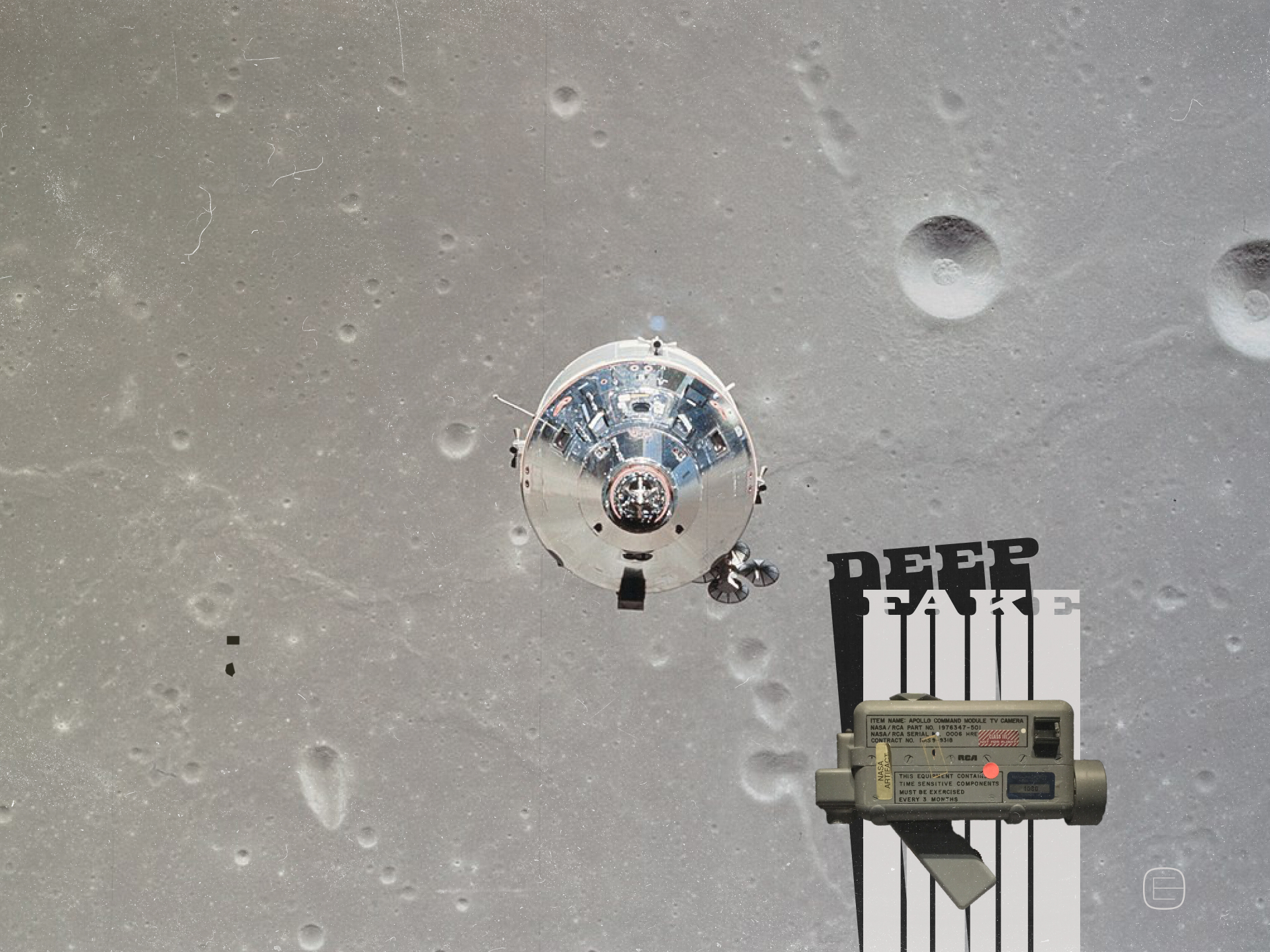Don’t Make Me Think by Steve Krug isn’t present in the photo above. I gave it away to another designer a few years ago. It’s arguably the ugliest book in the lot, but it’s definitely at the top of my list of most influential design books. While transitioning from an agency designer primarily focused on inventing interfaces with each client, to an experience designer fine-tuning a product to satisfy a much broader demographic, this book provided me with crucial lessons in simplicity and empathy.

I suppose the second-most utilized books would be somewhat of a tie. The Elements of Typographic Style and Universal Principles of Design both function as reference materials—field manuals, if you will. While the former has a bit of a narrative and is more of a pleasure to read, the latter is more of an encyclopedia of design principles, formatted in alphabetical order. They are both valuable resources.
The Visual History of Type is a newer acquisition and a glorious book-lover’s book. A typeface for every year, starting with Gutenberg’s Bastarda in 1454. The Hi-Fi photography enables the reader to examine each letterform’s characteristics. The author also created a clever framework to include detailed metadata for each typeface.
I like Eva Hesse’s painting and sculptural work, but I love her drawings. I always thought there was an uncanny common thread her drawings and some of my interaction sketches—both being unrefined, methodical, and hints of a framework. Eva Hesse Drawing is another book-lover’s book, with excellent typography, a great size and weight, and beautiful photographs of her drawings.
Here’s a few more titles that have helped me “keep my sword sharp” over the years:
- Don’t Make Me Think Steve Krug
- The Visual History of Type Paul McNeil
- The Visual Display of Quantitative Information Edward R. Tufte
- Eva Hesse Drawing Elisabeth Sussman
- Universal Principles of Design William Lidwell, Jill Butler, Kritina Holden
- It Is Beautiful…Then Gone Martin Venezky
- The Designer and the Grid Lucienne Roberts, Julia Thrift
- Merriam-Webster’s Collegiate Dictionary Merriam-Webster
- Sagmeister: Made You Look Stefan Sagmeister, Peter Hall
- The Elements of Typographic Style Robert Bringhurst
- Understanding Media Marshall McLuhan
- Thinking with Type Ellen Lupton
- Between You & Me Mary Norris
- Shady Characters Keith Houston
- Notes on Synthesis of Form Christopher W. Alexander




You must be logged in to post a comment.